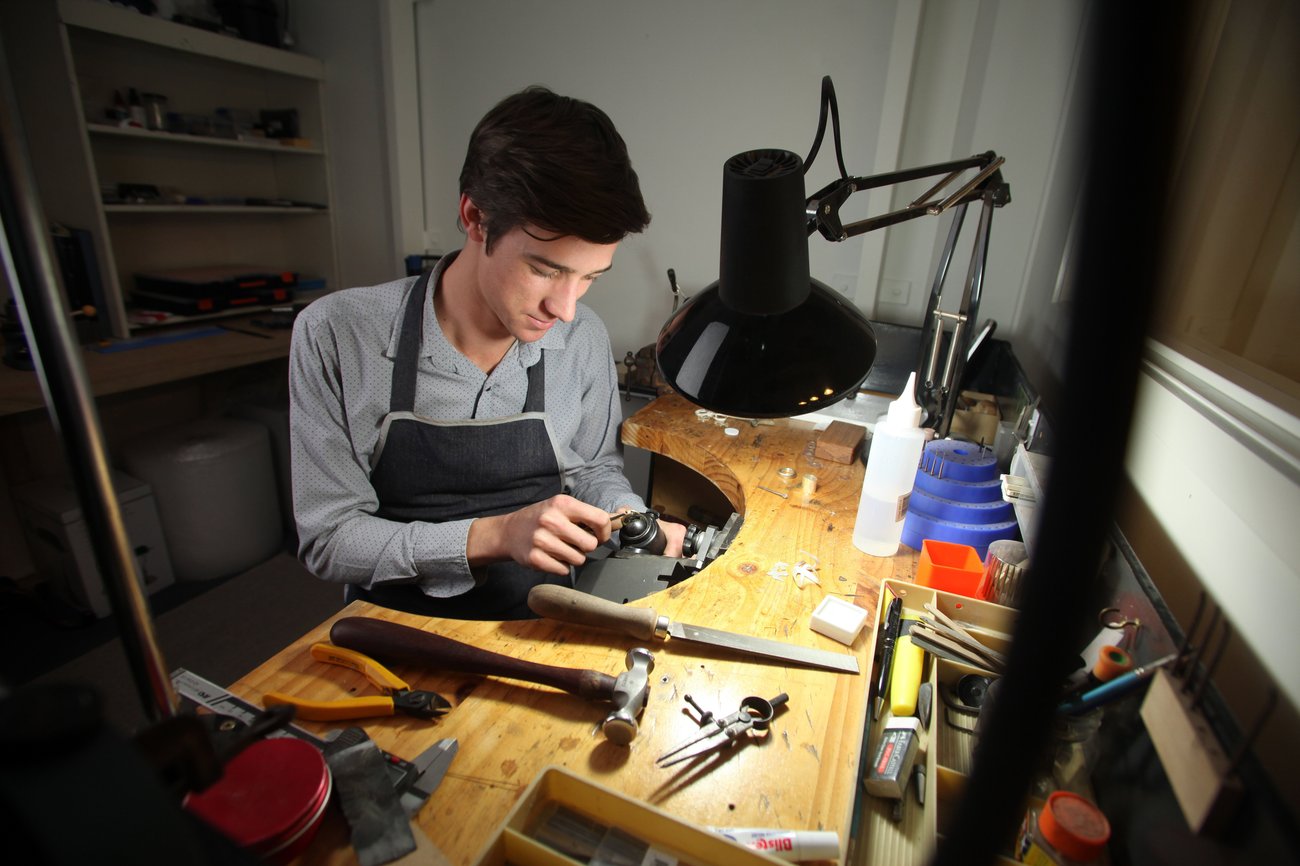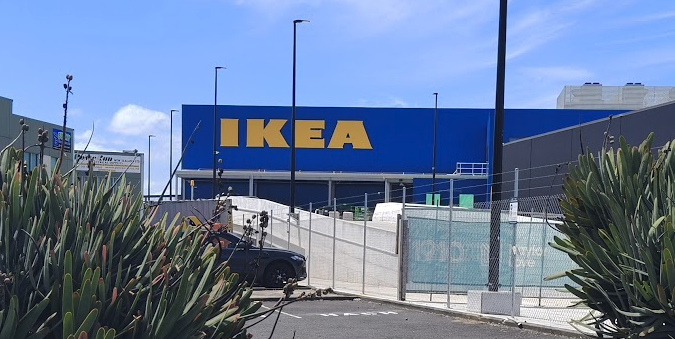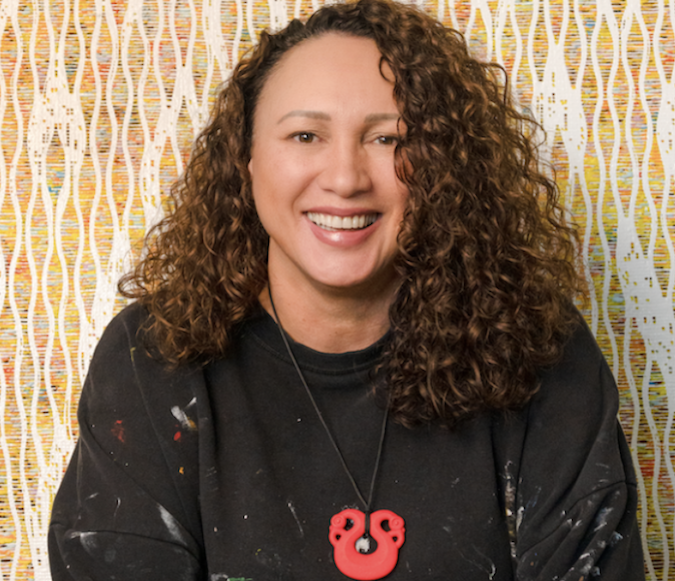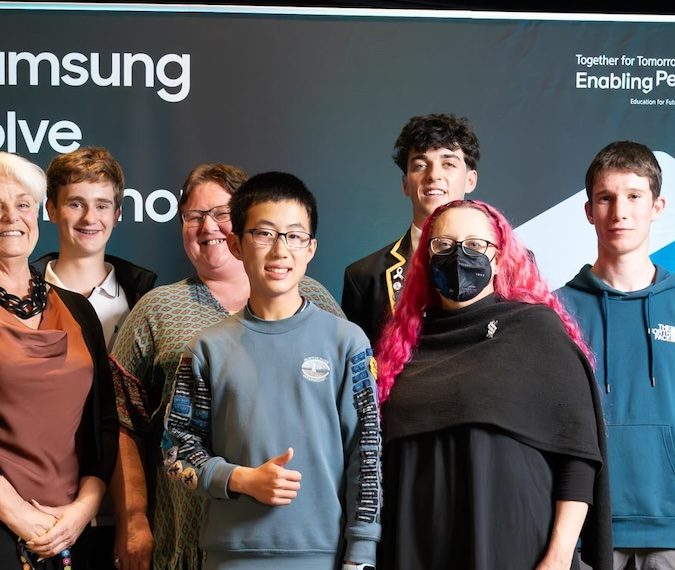Everything old is new again: young goldsmith Benjamin Clark combines metal and machines in the modern age

Internet pioneer Kevin Kelly says no technology ever goes extinct, it just loses its cultural relevance.
His latest book, The Inevitable, explores the importance of “old technology” – the technologies that are already in motion and will shape the next 30 years.
As the 21st century progresses, we are adding artificial intelligence to more and more objects – creating the so-called “Internet of Things”. Workplaces are changing massively, adopting new technologies to make humans’ jobs easier and more efficient.
But, as Kelly says, there are now more blacksmiths than there were in the middle ages. And for master jeweller Benjamin Clark working with “old technologies” is a privilege he’s not ready to lose.
The son of a watchmaker, Clark’s craftsmanship was evident from a young age.

Benjamin Clark
Spending his early years tinkering away in his father’s workshop inspired him to start creating his own jewellery at the age of 7.
The enterprising youngster sold primitive rings at a local market – some of his earliest customers even still cherish his first creations.
Clark well and truly got the jewellery bug and fell in love with the art form. He quit school and dived into a jewellery apprenticeship, spending seven years learning and refining his craft.
His desire to create his own designs was so strong that in 2012 he opened Benjamin Black Goldsmiths, in Nelson, with Amy Cunningham.
The latest technique in the design of jewellery is 3D CAD technology – an innovative method of jewellery design which allows the customer to view their desired piece in 3D before it is created.
A self-confessed “old-school enthusiast”, Clark can see the benefits of jewellers adapting their practice to include the technology, but he’s not ready to completely move into that world just yet.
“This is, of course, the way of the world now – and that’s fine. But I personally enjoy the process of hand-making.”
Rather than generate a 3D image of a piece, Clark opts for the traditional method of hand carving a wax or silver mock-up. Once the design has been refined he creates it in metal.
For more traditional designs, he occasionally uses CAD technology, but working with his hands has always been his first love. Clark finds inspiration for a piece not in sketching a design, but in the metal itself.

The Decadence Ring by Benjamin Black Goldsmiths
The craft is important to preserve, he says, because goldsmiths can create an item from beginning to end.
“There’s something special about working with a person to create a piece uniquely for them, weaving in their ideas, memories and personality.”
As with all parts of life in this digital age machines play an increasingly large role in commercial jewellery making.
But the imperfections and personal touches which has given jewellery such an immense sentimental value for centuries can be lost by pieces replicated by machines.
A CAD piece might still be hand finished, but there is a big difference between them and hand crafted pieces, Clark says.
“It’s like the difference between an authentic painting and a print. It still looks the same, but it doesn’t have the depth, meaning, artistry and energy or passion of the artist running through it. An artist leaves part of their soul in every piece they create.”
The most salient point of working in an “old” art form is a respect for the tools, Clark says.
“The tools I work with will be around long after I’m gone – and many of my tools were around long before I was born.”
Using tools and passing them on is part of the joy, Clark says, and is an increasingly rare tradition as modern technologies quickly become obsolete.
“There is something special about continuing the legacy of the gold and silversmiths who started the industry.”

The Sonata Brooch by Benjamin Black Goldsmiths
As a young goldsmith in the 21st century, Clark has a huge amount of respect for the work of the past. His skills might be the traditional techniques of the trade, but he has developed his own distinct style in his work.
On the front lines of the industry, Clark has seen people become increasingly aware of the difference between a mass produced piece of jewellery and a hand crafted piece.
“There’s a growing awareness of provenance and craftsmanship. We are finding people want to buy ethically made products that have been hand crafted in New Zealand.”
Clark is philosophical about what the future holds for his “traditional” craft. He doesn’t see the demand for high-quality, handmade jewellery diminishing any time soon.
“Technologies will come and go, but I’d like to think there will always be a place for people to go where they can experience the special process of having a piece of jewellery made for them, which lasts for generations.”




